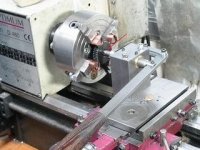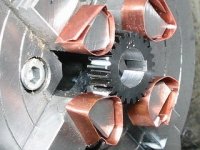GGoodrum
1 MW
Pics will help a bunch.  I'm still trying to get my head around how you are going to do this, and what sort of tools/machines are required. I'm going to have to get out the 22T ENO I have, and compare it to the hub. Is it that only the removal tool end of the ENO, where it narrows down a bit, is the part that has the splines? I get that you need to mill off the threads, so that portion will fit over the outer spline diameter, but I'm confused about what is it that you are cutting down to 32.5mm? Oh, wait, is that what will end up being the inner diameter of the spline "teeth"? That would give .02mm clearance, right?
I'm still trying to get my head around how you are going to do this, and what sort of tools/machines are required. I'm going to have to get out the 22T ENO I have, and compare it to the hub. Is it that only the removal tool end of the ENO, where it narrows down a bit, is the part that has the splines? I get that you need to mill off the threads, so that portion will fit over the outer spline diameter, but I'm confused about what is it that you are cutting down to 32.5mm? Oh, wait, is that what will end up being the inner diameter of the spline "teeth"? That would give .02mm clearance, right?
You guys are making my head hurt again... :?
You guys are making my head hurt again... :?







